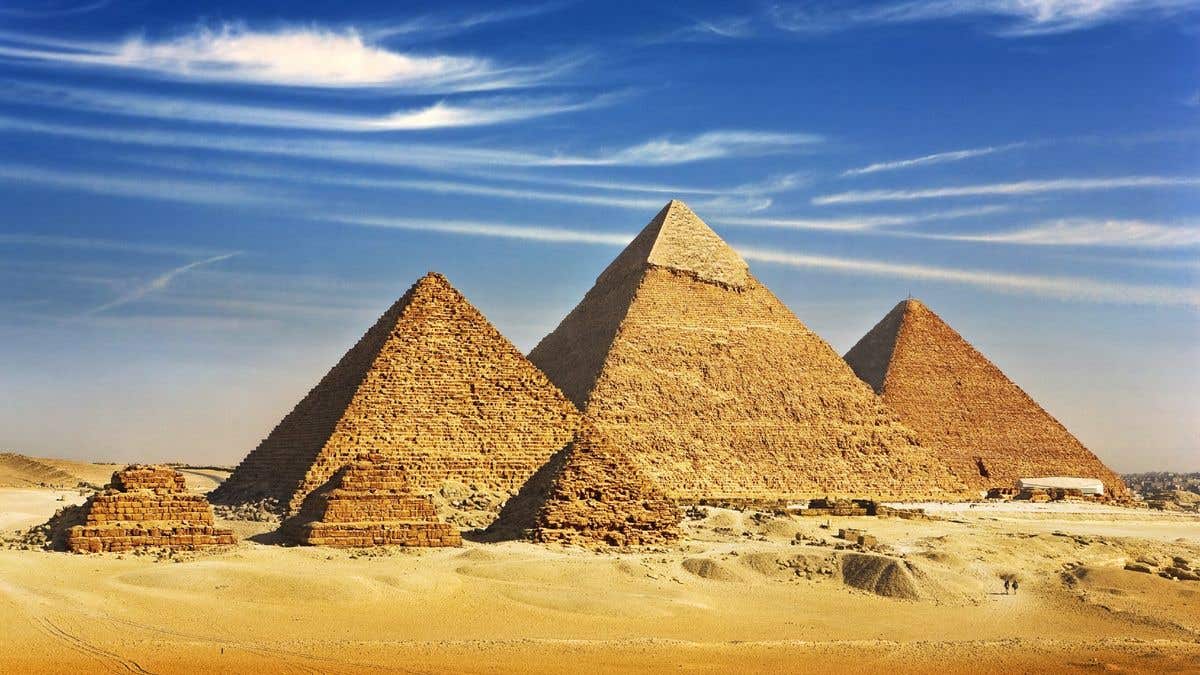Archeologists reveal how ancient Egyptians built the pyramids
The Great Pyramid alone contains more than 2.3 million blocks of limestone and granite, each weighing about two tons.

How ancient builders raised the mighty pyramids still captures the curiosity of historians and scientists. Despite decades of digging, high-tech scanning, and countless theories, the puzzle remains: how did a society without modern tools manage to move and stack stones the size of small cars?
A recent find near the Great Pyramid could bring researchers a step closer to an answer. A team of archaeologists began exploring the terrain around the monument, reviving an old idea with fresh tools and sharper questions. Their aim? To shed light on one of humanity’s boldest construction feats.
The scale of the job defies belief. The Great Pyramid alone contains more than 2.3 million blocks of limestone and granite, each weighing about two tons. “It’s a task that even today would require significant resources and engineering expertise,” said Dr. Laila Hassan, a leading archaeologist on the project. The mystery only deepens: how did workers thousands of years ago pull it off?
The answer may lie in the land itself. After analyzing the geography, the team proposed that the builders took advantage of natural waterways. They believe a lost branch of the Nile once flowed close to the site, allowing boats to carry heavy stones across what is now dry desert.
To confirm this theory, the researchers dug deep into the Giza floodplain. At a depth of 9 meters—nearly 30 feet—they uncovered five preserved layers of ancient soil. These fossilized samples were carefully sent to a lab in France equipped for detailed environmental testing.
The scientists were hunting for microscopic clues—pollen and plant matter tied to Nile vegetation. Their effort paid off. The lab found signs of the long-vanished Khufu Branch, a tributary thought to have dried up around 600 BC. The discovery adds weight to the idea that water, not just muscle, powered the pyramid project.
Related Stories
A study published in the journal Proceedings of the National Academy of Sciences states that the former waterscape and higher river levels around 4,500 years ago facilitated the construction of the Giza Pyramid Complex.
Not only did this discovery confirm the existence of the tributary, but it also bolstered the theory that it was instrumental in transporting the stone slabs that would later become an integral part of the pyramid's construction.
Moreover, the meticulous research unearthed a biodiversity hotspot. The team identified an astounding 61 species of plants during their analysis, providing a richer picture of the ancient Egyptian landscape.
Environmental geographer Hader Sheisha, who was part of the research group, articulated the significance of this find. "Without this tributary," Sheisha explained, "it would have been virtually impossible to build the pyramids. It acted as a natural conveyor belt, easing the logistical nightmare of moving such enormous stone blocks."
The spark that ignited this groundbreaking research was a fascinating piece of papyrus discovered in the Red Sea. This historical document detailed the account of an officer named 'Merer', who was tasked with transporting limestone up the Nile to a construction site in Giza.
When Sheisha was introduced to the papyrus, it immediately caught her attention. “I was so interested because this confirms that the transport of the pyramid’s building materials were moved over water,” she said.
"Understanding more about the environment and infrastructure of that time can help decode the perplexing enigma of the pyramid’s construction,” she emphasized.
The revelation that the ancient Egyptians may have used a network of natural waterways to facilitate the movement of the pyramid's construction materials is a testament to their ingenuity.
It not only provides a plausible explanation for the construction of these wonders but also offers a captivating glimpse into the resourcefulness and adaptability of this ancient civilization.
As modern technology and techniques continue to intersect with ancient history, it's exciting to think about what other mysteries we might unravel next.
For now, though, we have a tantalizing glimpse into how the Egyptians might have accomplished one of the greatest architectural feats in human history.
Note: Materials provided above by The Brighter Side of News. Content may be edited for style and length.
Like these kind of feel good stories? Get The Brighter Side of News' newsletter.



